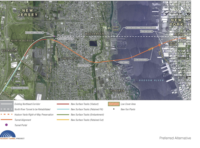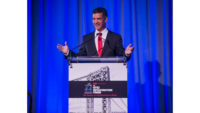Maintaining a state of good repair and emphasizing asset management are among the key goals outlined for public transportation projects in the recently enacted two-year federal bill called MAP-21, or the Moving Ahead for Progress in the 21st Century Act.
A cadre of Federal Transit Administration officials provided the main attraction at the American Public Transportation Association's annual meeting, held in Seattle early October. Among the biggest changes provided by MAP-21, they emphasized, is the requirement that a transit representative now be included in any long-range regional planning process in areas of 200,000 people or more.
"This is a very big deal," said FTA's deputy administrator, Therese McMillan. "Transit is not just a footnote to highways here." Regional plans also must include performance targets for safety, state of good repair and asset management.
Further, the legislation encourages more innovative delivery methods such as private-public partnerships. Takis Salpeas, global rail division manager for Parsons Corp., predicted that a program manager-at-risk (PMAR) model could become an option alongside design-build and construction manager-at-risk.
One distinctive of the PMAR model is that the program manager takes on risk very early, in the environmental assessment phase, for constructability and permitting. The model has been used in other sectors, such as petrochemicals and pharmaceuticals, Salpeas noted.
As transit officials strive to understand fully the changes in the federal process for projects, they also are watching the November elections closely. Partisan politics seem to play a bigger role than in the past: Republicans tried to cut dedicated mass-transit funding from a House version of the bill this year, while Senate Democrats pushed for more federal oversight.
FTA Administrator Peter Rogoff acknowledged that times are still tough. "MAP-21 expanded the types of projects that can be considered for New Starts funding," he said, "but also cut 10% from the New Starts program" to $1.9 billion a year.




Post a comment to this article
Report Abusive Comment